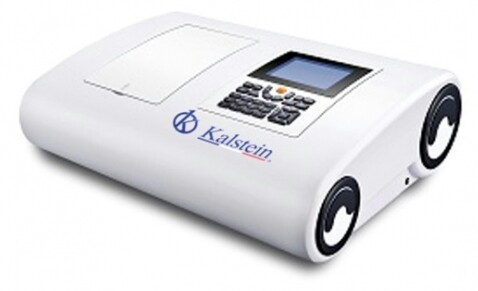A spectrophotometer is a piece of equipment used to measure the absorbance of a sample, as a function of the wavelength of electromagnetic radiation. There are several types of spectrophotometers. These are grouped according to the type of sample analyzed; There are atomic absorption and molecular absorption (commonly known as a UV-VIS spectrophotometer).
In general, a spectrophotometer is made up of 4 main parts: a source, a monochromator, a beam splitter, a sample area, and a detector. It also has optical elements such as lenses or mirrors, which transmit light throughout the entire equipment.
UV-VIS spectroscopy is an analytical technique that measures the amount of discrete wavelengths of UV or visible light that are absorbed or transmitted through a sample compared to a reference or blank sample. This property is influenced by the composition of the sample, potentially providing information about what is in the sample and in what concentration.
How does a UV-VIS spectrophotometer work?
The UV-VIS spectrophotometer is based on the process of absorption of ultraviolet-visible radiation (radiation with a wavelength between 200 and 780 nm) by a molecule. The absorption of this radiation causes the promotion of an electron to an excited state. The electrons that are excited when absorbing radiation of this frequency are the bonding electrons of the molecules, so the absorption peaks can be correlated with the different types of bonds present in the compound. Because of this, UV-VIS spectroscopy is used to identify the functional groups present in a molecule. The bands that appear in a UV-VIS spectrum are wide due to the overlap of vibrational and electronic transitions.
Light has a certain amount of energy that is inversely proportional to its wavelength. Therefore, shorter wavelengths of light carry more energy and longer wavelengths carry less energy. It takes a specific amount of energy to promote the electrons in a substance to a higher energy state that we can detect as absorption. Electrons in different bonding environments in a substance require a different specific amount of energy to promote the electrons to a higher energy state. That is why the absorption of light occurs for different wavelengths in different substances.
What is the application of a UV-VIS spectrophotometer?
Ultraviolet-visible spectroscopy (UV-VIS) is a widely used technique in many areas of science ranging from bacterial culture, drug identification, and nucleic acid purity checks and quantification, to quality control in the beverage industry and chemical research.
That is why a UV-VIS spectrophotometer is an instrument used in chemical analysis that serves to measure, as a function of wavelength, the relationship between values of the same photometric magnitude relative to two radiation beams and the concentration o chemical reactions that are measured in a sample. Its applications can be qualitative and quantitative. It is also used in microbiology laboratories for the quantification of microorganisms.
At Kalstein we are MANUFACTURERS and we offer you excellent UV-VIS spectrophotometers at the best prices on the market. That is why we invite you to take a look at the Products menu. HERE


